In 2022, there are a few rules that small and medium-sized businesses have to follow if they want to get noticed by their target audience.
First and foremost, up-and-coming brands must build and maintain a strong online presence to maximize their reach. Secondly, they have to invest in the overall customer experience, always going the extra mile to deliver unmatched products and services. And finally, they must utilise the most powerful communication methods that can effectively convey branded messages and resonate with the people most likely to become their buyers, supporters, and advocates.
When it comes to the last of these rules, it’s safe to say that visuals make for one of the best communication methods for brands out there. And even more importantly, they’re the perfect medium to use when still in the brand-building stages of a business plan, as they go a long way in helping brands come off as relatable, authentic, and user-oriented.
So how exactly can you use visuals to make your brand more relatable? And why does relatability matter so much in the first place? Let’s dive in.
Relatability, Authenticity, & Humanisation: How They Make a Difference
The way consumers make purchasing decisions is relatively straightforward.
For most people, cost is a top priority when shopping. It is closely followed by value-for-money, convenience, and shipping speeds. But, over the past few years, there have been some changes to the way people make purchasing decisions.
According to Nielsen IQ’s The 2022 State of Consumers report, consumers have started to prioritise new brand and product attributes since 2020. According to the research, these include sustainability, social responsibility, and trustworthiness. These attributes show that consumer behaviour is becoming more purpose-driven than it had ever been before.
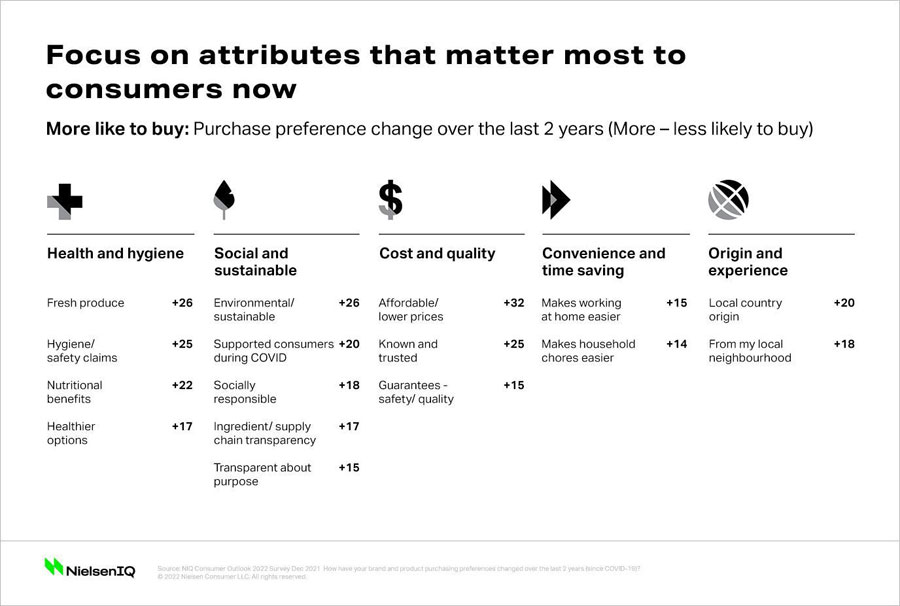
But shoppers making purpose-driven buying decisions is not all. Studies show that people are becoming more and more careful about what brands they will even consider supporting.
Research from Google shows that young generations want to support brands with clearly defined values that match their own. Moreover, as many as 86% of buyers want to see authenticity and relatability from brands and make purchasing decisions based on these two elements. Unfortunately, however, in most people’s eyes, fewer than 1/2 of brands are actually successful as coming off as relatable or authentic.
What’s the Role of Visuals in Building Relatability?
The easiest way to describe the part visuals play in driving brand authenticity and relatability is to say they’re an extremely effective communication method.
First and foremost, it’s crucial to understand that the human brain is wired to process visuals faster than words. Moreover, research shows that visuals aid information retention more effectively than written messages, making them the perfect format for brand-building activities.
It’s also worth noting that visuals, especially when enhanced with web design, effectively direct user attention and drive engagement. And, of course, they’re the ideal way to communicate emotions. And let’s not forget that emotions are crucial in building strong and fruitful brand-consumer relationships.
These facts essentially testify to the notion that images and videos make the perfect medium when building brand image. So how can you use visuals to make your brand more relatable?
Here are a few strategies (with examples) you might find inspiring.
Always Stick to Your Visual Branding Guidelines
One of the absolute best ways to make your brand relatable through images and videos is to be adamant about sticking to your branding guidelines.
You see, the more consistent you are with the visuals you publish through your distribution channels, the more likely your audience is to create a connection between your visual style, your brand, and the unique value your business offers to consumers.
The idea that people like what they know is nothing new. According to the mere-exposure effect, consumers will develop preferences for products or brands they find familiar.
It’s why tourists go to Starbucks for their coffee when they travel abroad. It is also the explanation behind people ordering the same foods from their favourite restaurants. And the mere-exposure effect is why companies like Ultimate Meal Plans use repetition on their social media feeds, making use of every single opportunity to showcase their logo and brand colours. It helps their target audience recognise their posts and aids them in building their image as a relatable brand that understands its audience’s needs and delivers solutions that work.
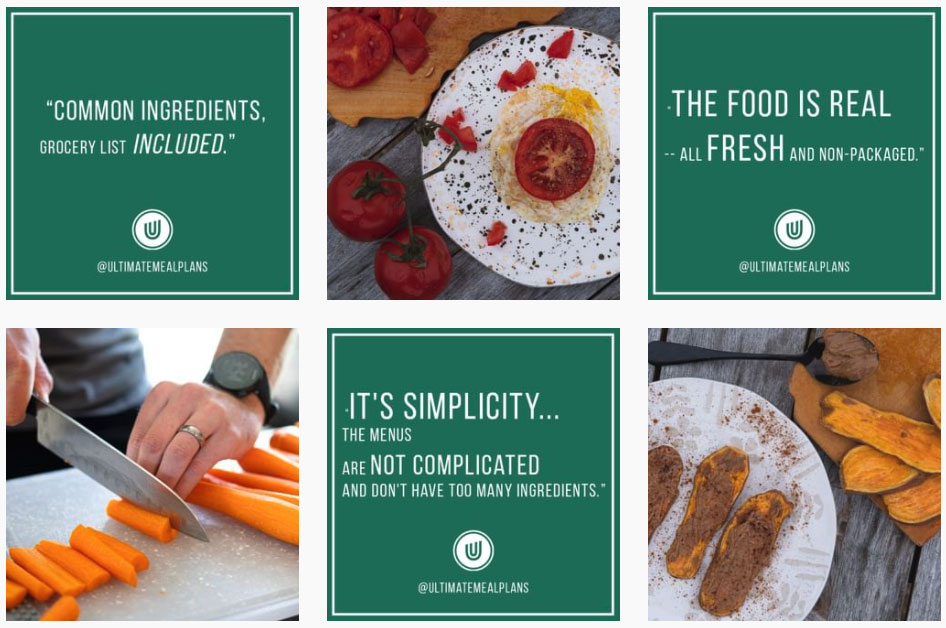
Use Visuals to Tell Stories
Utilising the power of storytelling is another excellent method for making a brand more human. And that’s not just because stories are more memorable than data or claims without context.
By utilising visuals, you can create narratives around your brand and products. One of the best examples of such a marketing strategy in action comes from Dollar Shave Club.
This brand regularly uses video that takes the form of story-time. In all of its ads, the narrative follows a simple formula: the story describes a situation in which the brand’s audience has a pain point, and Dollar Shave Club has the solution. This, in itself, is enough to make people see something human in the brand.
However, there’s more. With its friendly and familiar tone, Dollar Shave Club also comes off as an approachable entity that has a lot in common with its target audience.
For a slightly easier-to-recreate example of storytelling with visuals, why not check out this 404 error page by Healthline? Instead of simply telling web visitors that the page isn’t working, this brand chose to narrate a story. So, the page isn’t experiencing technical difficulties. Instead, it’s taking a sick day, just like the majority of people browsing Healthline’s site. If that’s not relatable, then what is?
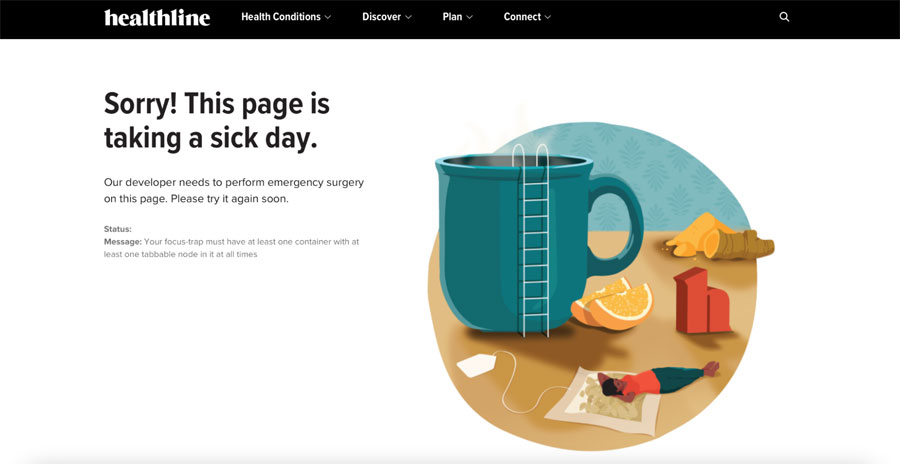
Get Personal
Getting a business off the ground is not the most difficult aspect of success. After all, as data has shown, consumers love supporting small businesses. The most challenging part of running a profitable business is keeping up with growth.
You see, as businesses evolve, they lose the charm of the small, relatable company. And they might even find themselves having to deal with the stigma that comes from their size and power.
Nonetheless, by applying a few visual storytelling techniques, businesses can circumvent this problem and continue to attract their target audience. All they need is a strategically constructed brand biography.
Check out how Innocent combines illustrations and photos (pulled straight from the founders’ archives) to tell its story. Sure, the website conveys the B Corp’s history. But much more than that, it visually describes the process it took to turn a dream into reality.
Essentially, it reminds consumers that, at its heart, Innocent is still committed to the mission that resonated with consumers in the first place – helping people and their communities lead healthy and sustainable lifestyles.
Show You’re Proud of Your Products
What is it that’s in common for all people, no matter where they come from? It could be said that all of us are, in some way, searching for and trying to fulfil our purpose.
So, when trying to humanise your brand, why not use visuals to show that your business is, essentially, doing the same thing? It’s developing products that users will love and that will, hopefully, make a difference (however insignificant that difference may seem)?
And the great thing is, you can easily do this on your website with product photography. All you have to do is find ways to show off those little details that make your creations unique, valuable, and worthy of your pride.
For example, on its booklets printing product page, Mixam shows off booklets that it has made for its clients, proving just how much it cares about delivering prints that anyone would be proud to have associated with their brand.
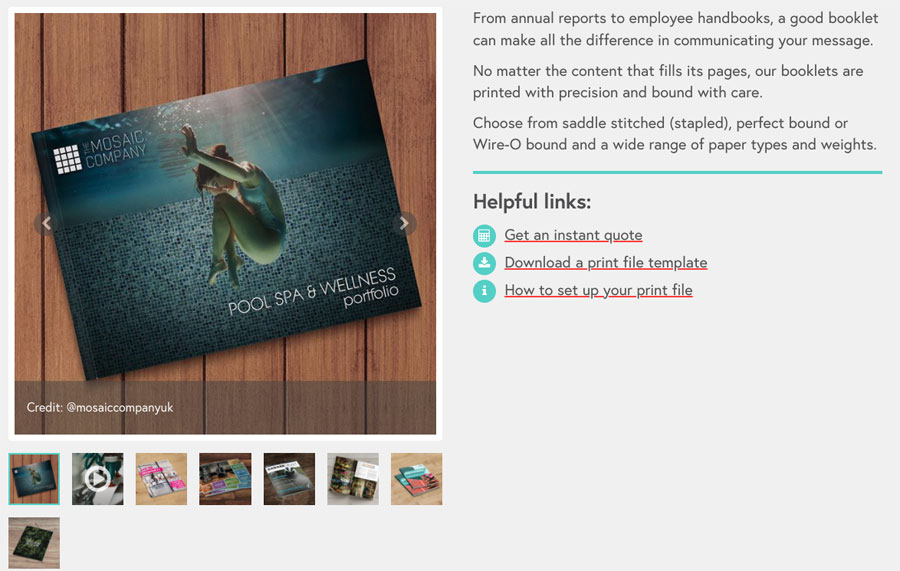
Similarly, if you check out the Brioni website, you’ll see that each garment product page includes shots that show the item up-close. This choice obviously testifies to the quality offered by the brand. On top of that, it proves that Brioni truly cares about delivering a next-level experience to consumers looking for sleek and sophisticated formalwear.
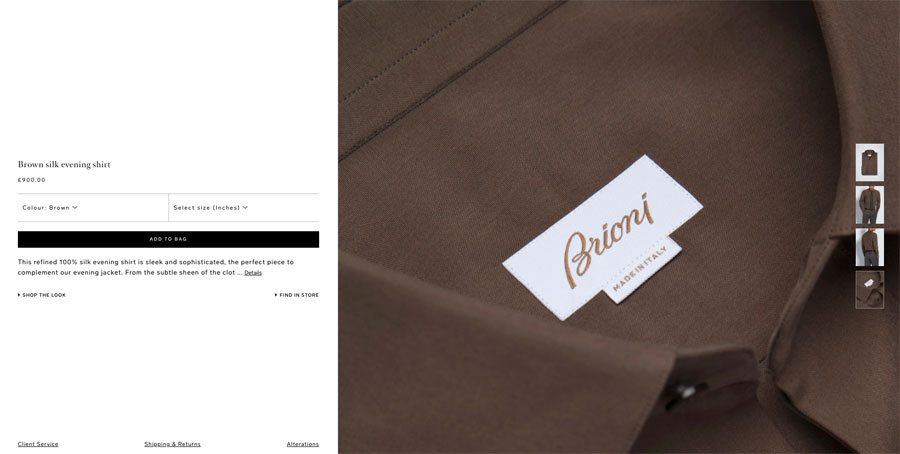
Share User-Generated Content
We’ve already mentioned that most consumers find brands difficult to relate to. But did you know that there’s an extremely effective strategy for boosting brand authenticity?
According to Stackla’s research, making your brand more relatable can be as easy as utilising user-generated content. UGC is seen as the most authentic form of content by as many as 60% of consumers.
And the great thing is that including UGC in your marketing campaigns is super simple.
You can do what GILI does, for example: encourage people to submit images with their online reviews, which you can then show off on your homepage.
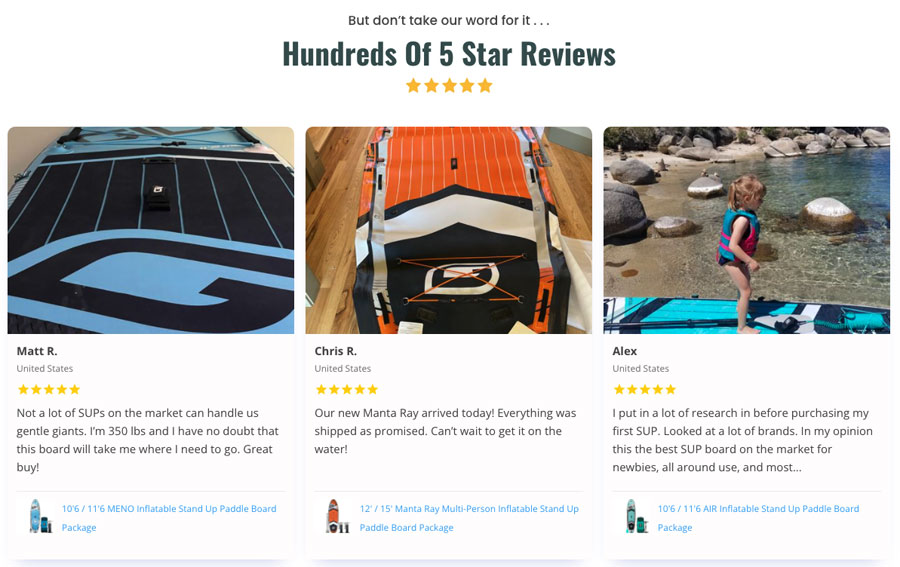
Or, you can take things a step further and do something along the lines of the AerieREAL page on Aerie’s site, which pulls UGC straight from Instagram and encourages customers to submit their unretouched photos.
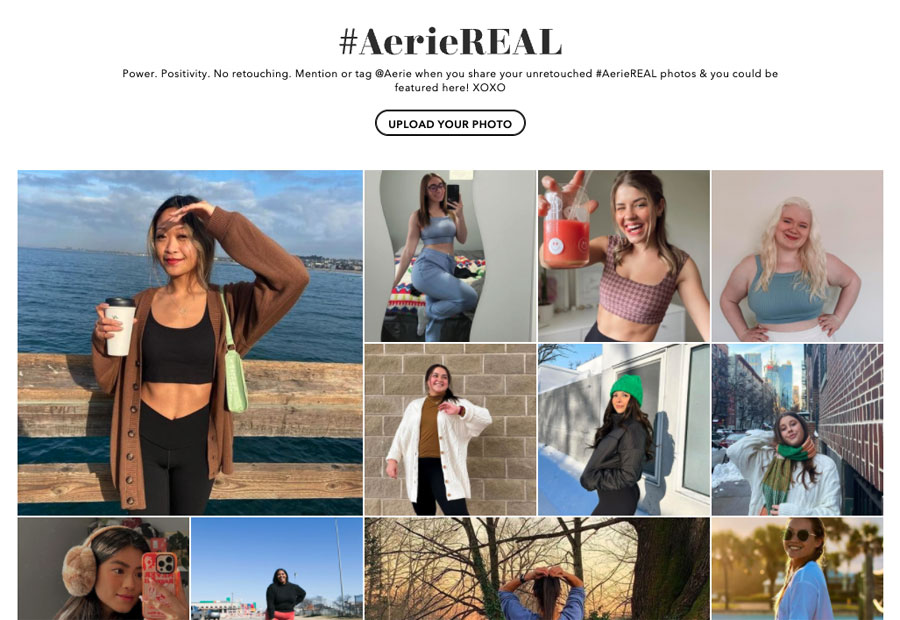
Wrapping up
Making your brand relatable and human takes a lot of work. But with the strategies described in this article, that work shouldn’t be too difficult.
Just do your best to be authentic and transparent. Share the things that make your brand what it is – whether it’s your attention to detail, your unique origin story, or your commitment to doing your best to meet your customers’ needs. Rest assured, people will feel the connection. And all you’ll have to do from there is to continue in the same way you started and work on nurturing those unique connections with your clients.






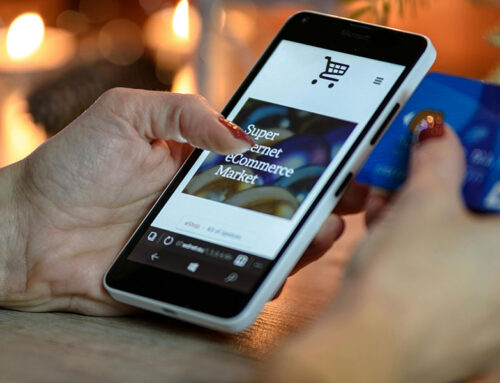
Leave A Comment